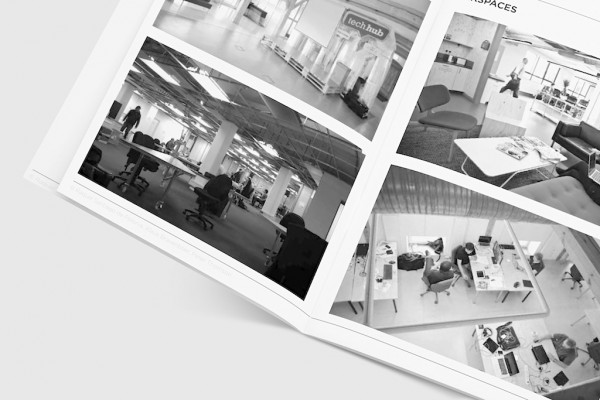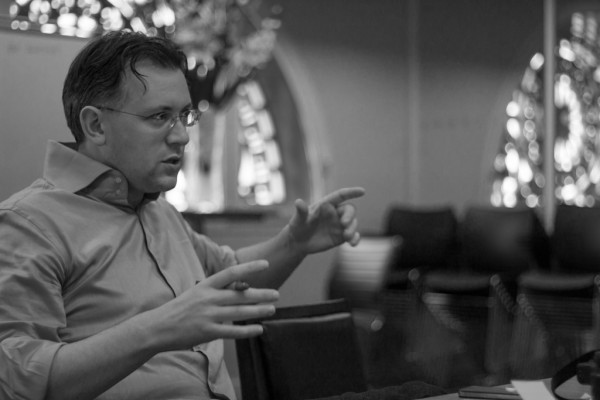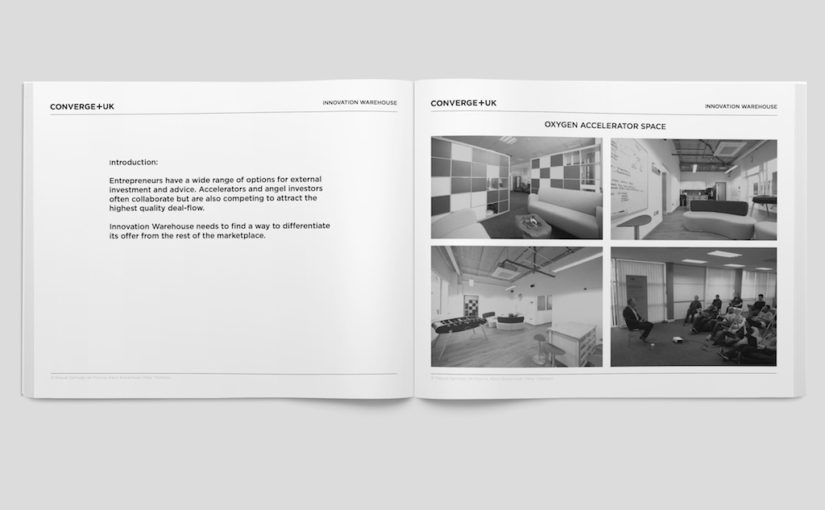Competitor research is a powerful link between the strategy and design phases of a rebranding project. The design team need to understand the visual landscape in which the new brand will exist. The new brand needs to be sufficiently different from existing brands in the marketplace. Understanding the visual landscape helps both the client and the design team get a feel for the competitive space. The first step in understanding the playing field is design research.

Our design research for the Innovation Warehouse is intended to make sure that the final brand designs are sufficiently different from the competitors to be memorable and interesting for the audience. We’ve made our research documents available for download as part of the open-source case study approach that the Innovation Warehouse are taking to the rebranding project.

Competitor Visual Audit
The design team began collecting the visual audit of competitors while the strategic mapping and user stories work was still under way. Lean branding is all about running multiple racetracks that can reinforce each other.
1. Co-working: Design Research
We discussed the co-working spaces that the Innovation Warehouse team admired and conducted our own industry research. We then analysed the brand design, websites, interior workspaces and event spaces of the top co-working spaces in London.
We asked the Innovation Warehouse members where else they had considered joining. Based on this information we looked also at:
- TechHub
- Google Campus
- Central Working
- The Hub
- Club Workspace
- The Cube.
You can download the full research report as a pdf: Report 1 – Design Research on Co-working Brands in London
We found that the standard of professionalism, consistency and design among London co-working spaces is very high. Each space has a unique feel and a different target market, so the pressure is on for Innovation Warehouse to find its niche.
2. Accelerator: Design Research
The startup accelerator and angel investing marketplace in Europe is rapidly becoming more competitive. As the market matures, the various accelerators are beginning to differentiate themselves more.
The LeWeb discussion moderated by Mike Butcher with Ami Shpiro from Innovation Warehouse, Jon Bradford of TechStars and Reshma Sohoni of Seedcamp discussed the rapidly increasing options for aspirational entrepreneurs. As the accelerator marketplace in London is maturing, the time has come for the Innovation Warehouse to clearly differentiate itself.
Our design analysis found that the average quality of design among accelerators was lower than among co-working spaces. The interior fit-outs of accelerators were generally less attractive than those of co-working spaces. But the overall standard of graphics and web design was still high and the Innovation Warehouse needs to lift its game. You can download the pdf: Report 2 – Design Research on London Startup Accelerators.
We presented the competitor mapping and design research to the client team as part of the early stages of the design work. It’s useful to get a feel from the client about what they like and dislike about the competitors. Discussing the competitors together helps get the client team and design team synchronised.
The next step is to explore design themes based on the brand strategy and create mood boards. The design themes will allow prompt a discussion of the key things that we want to capture in the final brand design. The visual audit will help provide input for the design team and a benchmark for the client.
